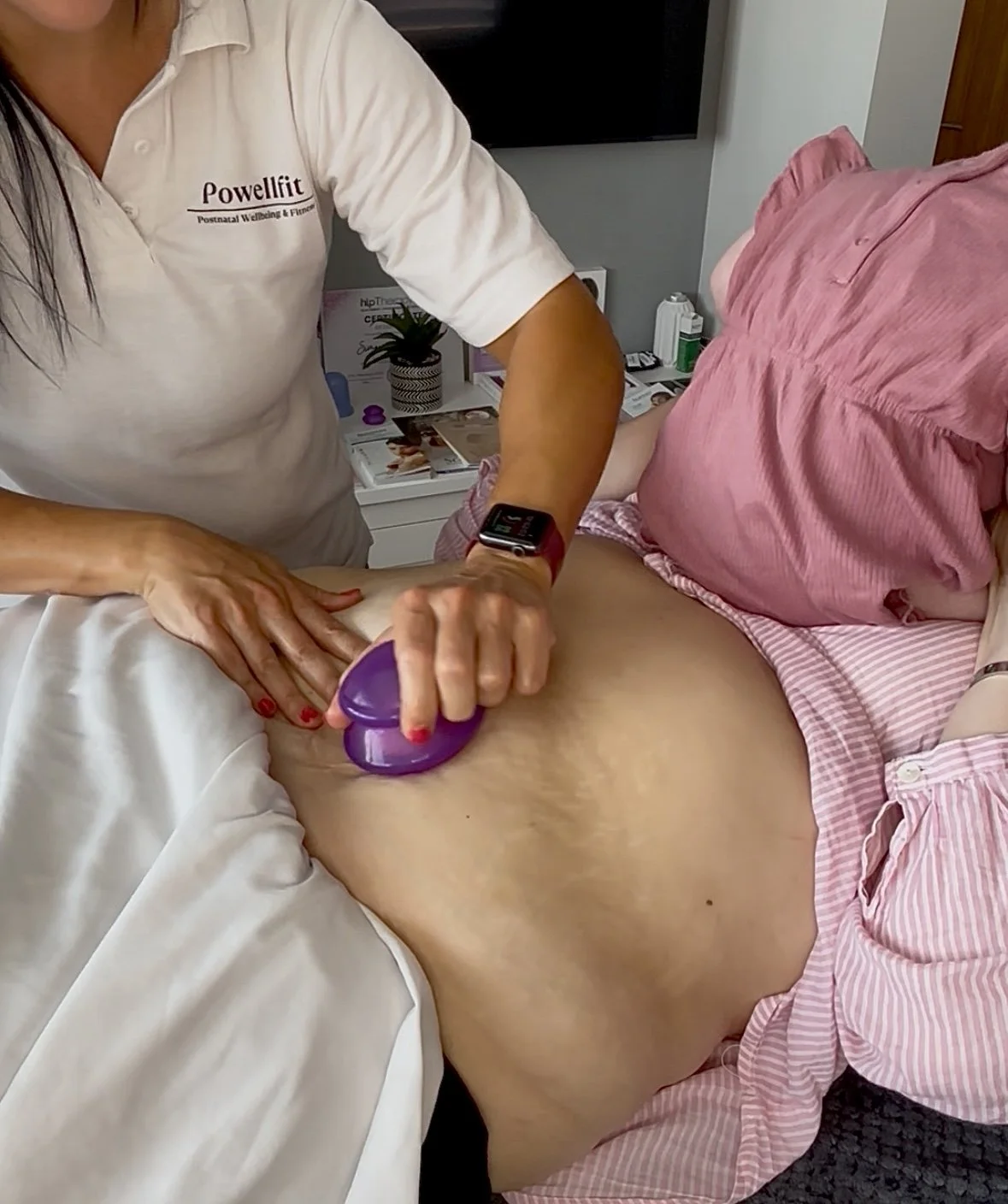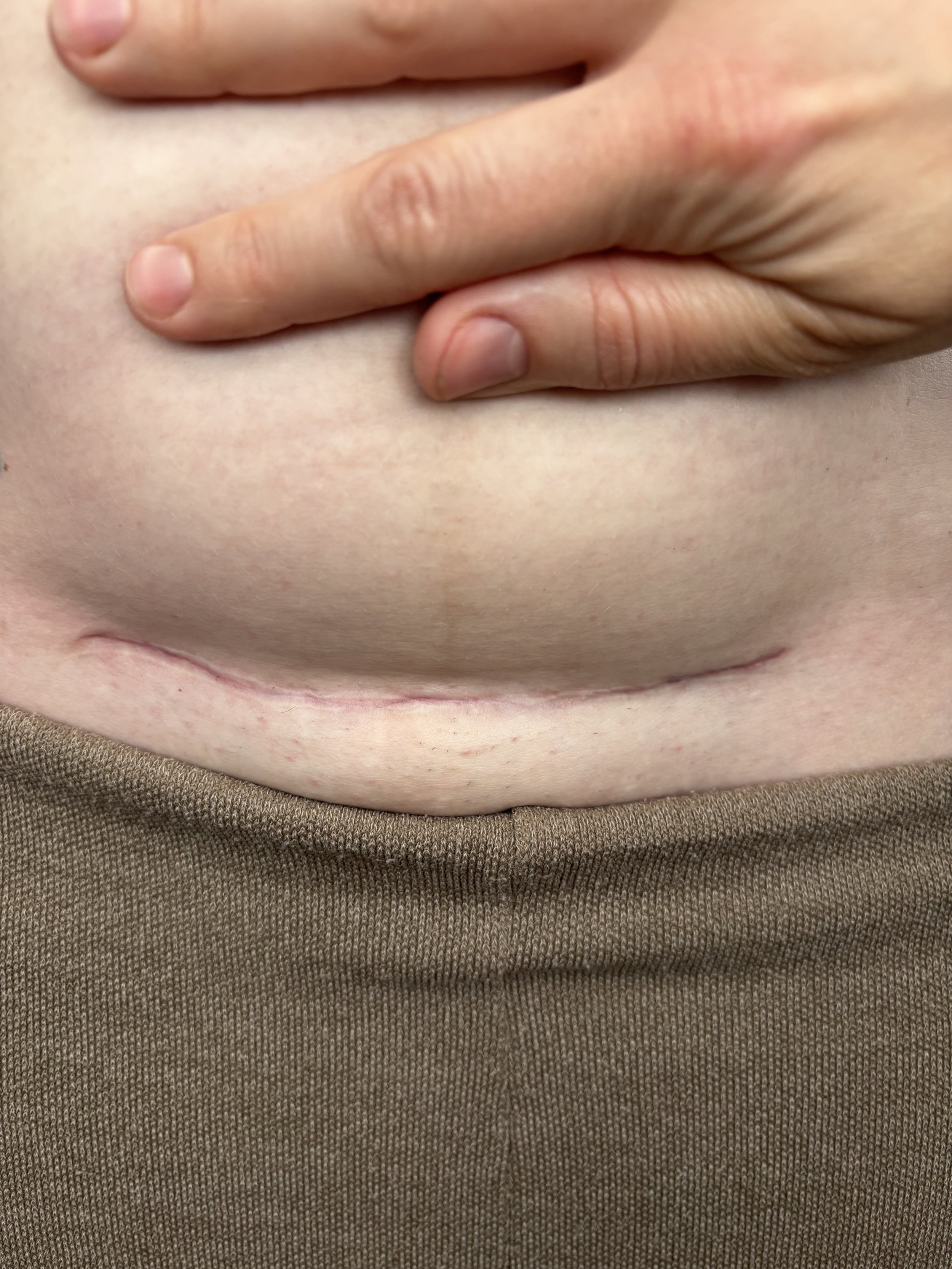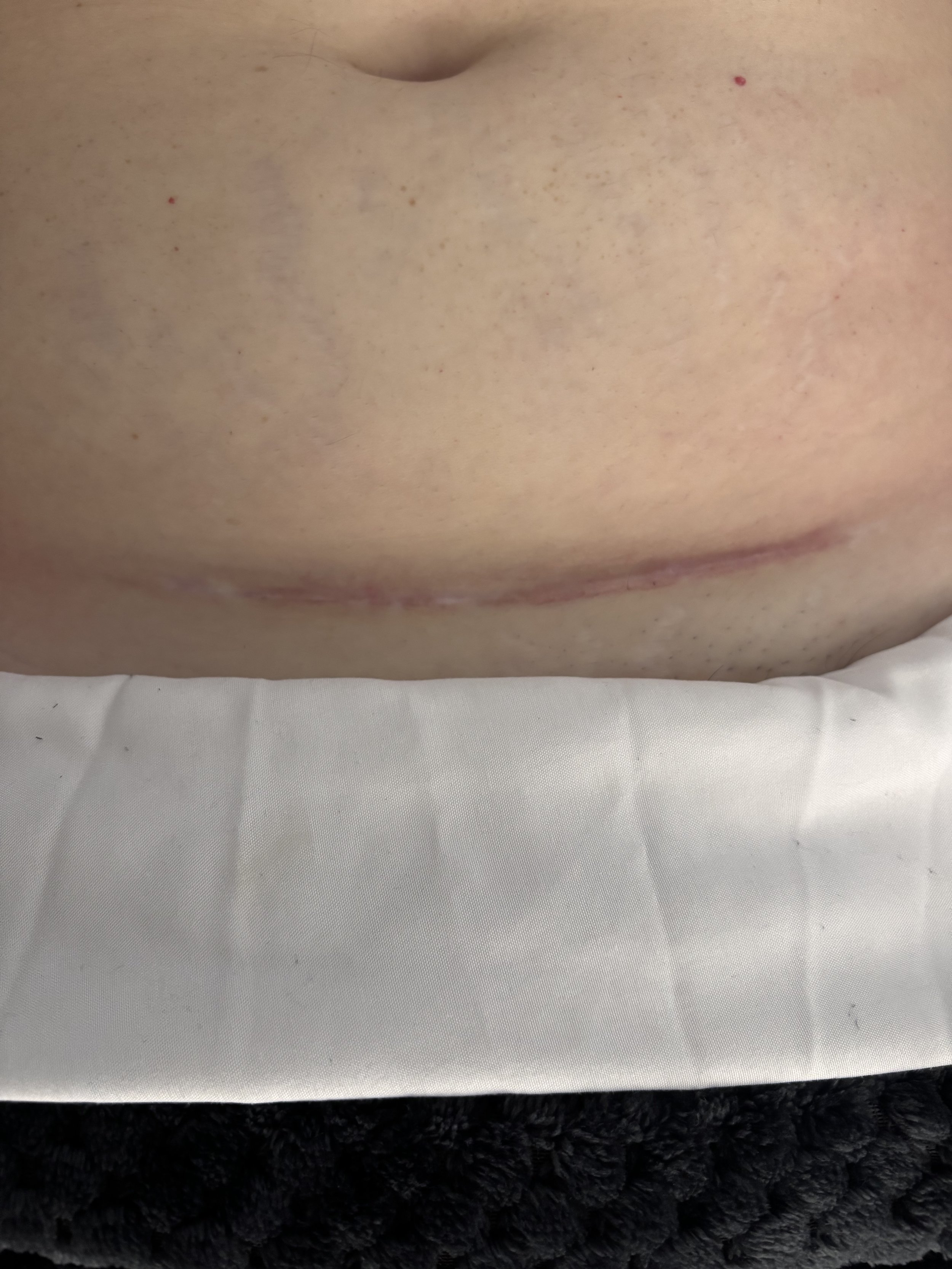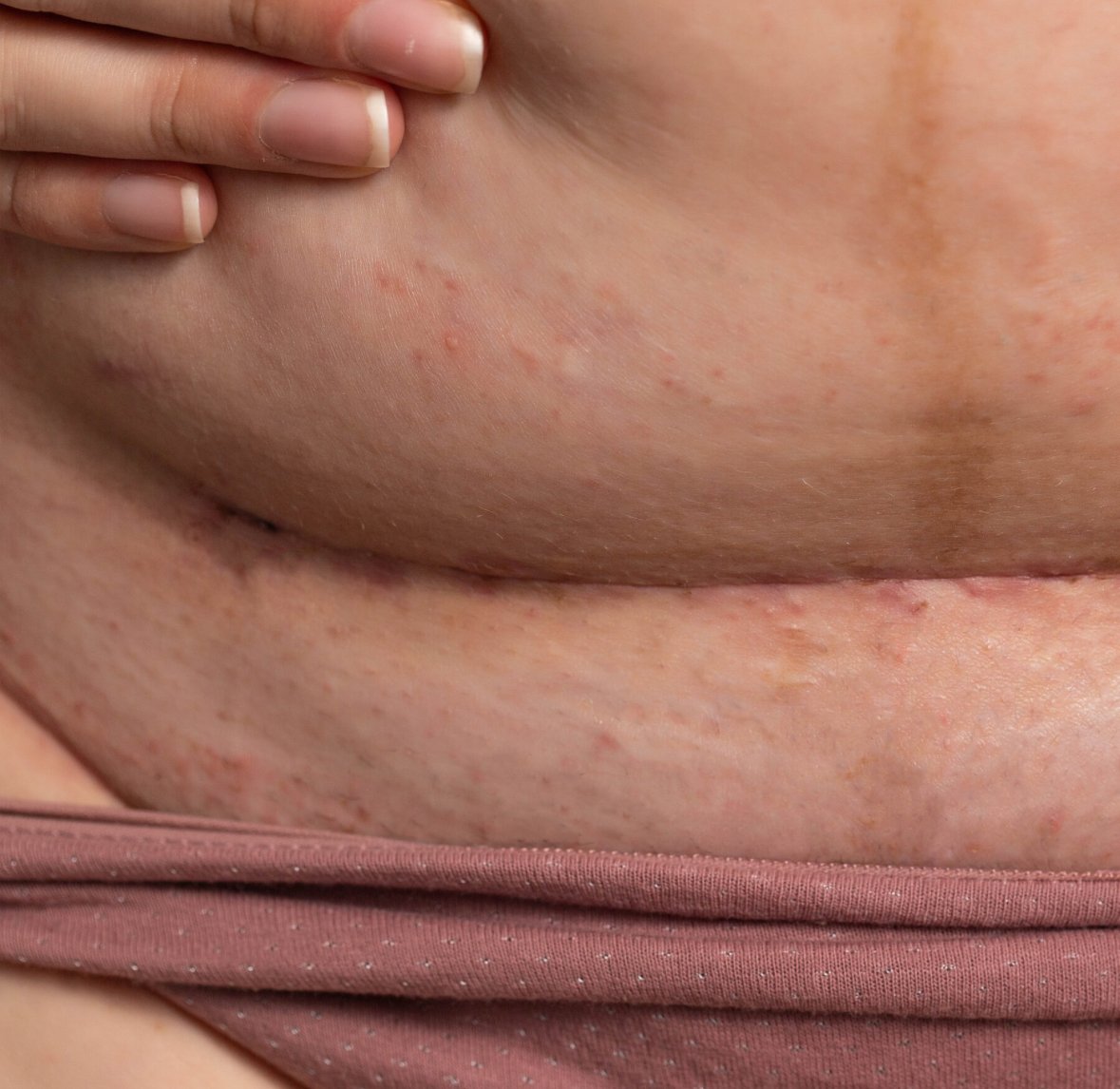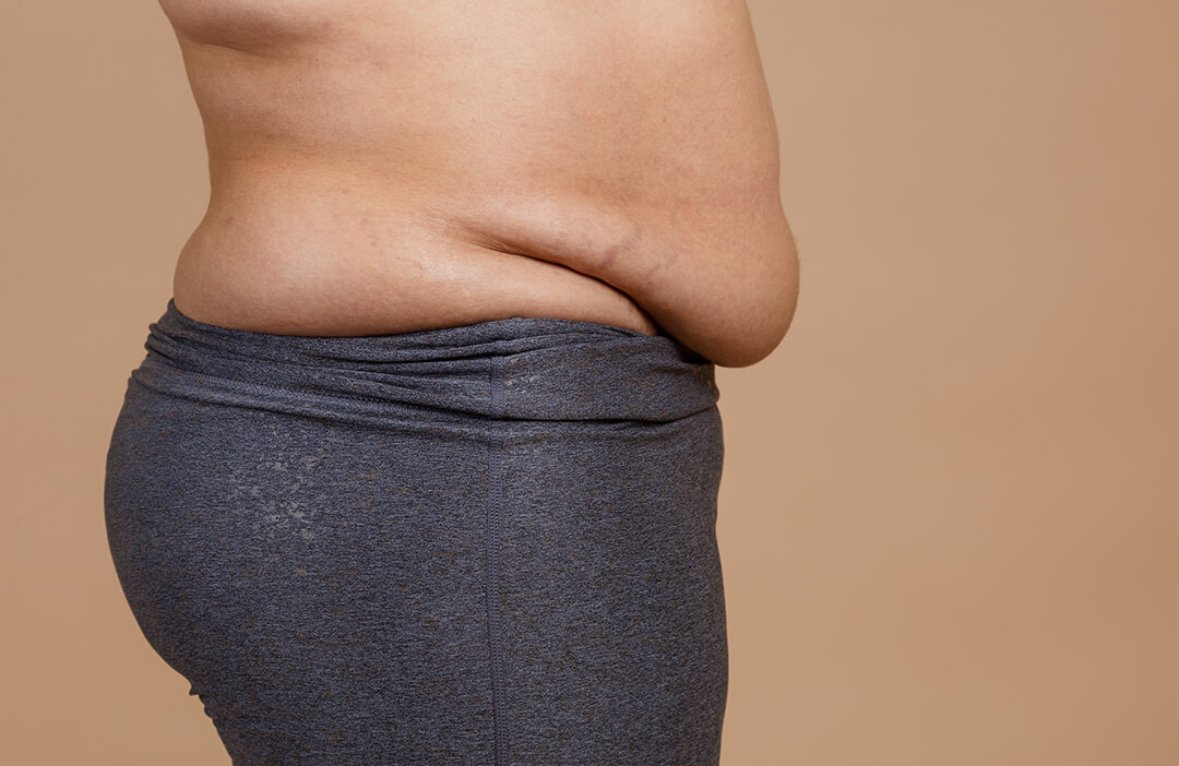Helping Women Find Their Strength After C-Section Birth
After having a baby, it’s easy to feel lost. During pregnancy, there’s so much focus on you, but once your baby arrives, that attention shifts, and you’re left navigating recovery, emotions, and physical changes on your own.
You might have been told that things like incontinence, abdominal separation, prolapse or C-section overhang are just part of having a baby—but that’s not the whole story. These are common postpartum challenges, but they are not something you have to accept as your new normal. With the right approach, healing and recovery are absolutely possible.
If you’ve had a C- section, you might relate to some of these:
Do you feel numbness or pain around your scar?
Do you feel tightness around your scar?
Do you avoid touching your scar?
Do you feel disconnected from your scar?
Are you struggling with the “mummy pouch” or overhang that won’t seem to go away?
Does your scar contributes to an emotional pain maybe due to a traumatic birth ?
C-section scars don’t just affect appearance—they can impact mobility, cause discomfort, and contribute to core and pelvic floor dysfunction. Scar massage therapy helps improve healing, reduce tightness, and restore function.
Benefits of Scar Massage
Improves blood flow and tissue healing
Reduces adhesions and scar sensitivity
Enhances core and pelvic floor connection
Eases pain, numbness, or pulling sensations
What is Incontinence ?
Stress Incontinence – Leaks from coughing, sneezing, or exercise, often after childbirth.
Urge Incontinence – A sudden, intense need to urinate, linked to an overactive bladder.
Mixed Incontinence – A combination of stress and urge incontinence.
Overflow Incontinence – Incomplete bladder emptying, causing frequent dribbling.
Causes & Management
Common causes include pregnancy, menopause, weak pelvic floor muscles, C-section scarring, and aging.
To manage symptoms:
✅ Strengthen your pelvic floor (Kegels)
✅ Try C-section scar massage to improve nerve function
✅ Learn proper core engagement to reduce pressure
✅ Adjust lifestyle (limit caffeine, train bladder)
How do you know if you have Prolapse ?
Pelvic organ prolapse (POP) happens when the pelvic floor muscles weaken, causing organs like the bladder, uterus, or rectum to drop and press against the vaginal walls. It’s more common after childbirth, menopause, or due to chronic pressure on the core.
Signs & Symptoms
A heavy or dragging sensation in the pelvis
A bulge or pressure in the vagina
Difficulty emptying the bladder or bowels
Lower back discomfort
Causes & Management
Factors like pregnancy, weak pelvic floor muscles, and repeated heavy lifting contribute to prolapse.
✅ Strengthen your pelvic floor with Kegels
✅ Improve posture & core engagement
✅Avoid straining during bowel movements
✅Seek pelvic floor therapy for personalized guidance
How Do You Know If You Have Diastasis Recti?
How about your tummy? Do you know if and when you have separation of the abs? Diastasis Recti (DR) is the separation of the abdominal muscles (rectus abdominis) along the midline, commonly occurring during pregnancy due to the stretching of connective tissue (the Linea alba). This separation can lead to core weakness, back pain, pelvic floor dysfunction, and the persistent "mummy pouch" many women struggle with postpartum.
A visible gap or bulge down the midline of your abdomen
Weakness in your core, making it difficult to engage your abs
Lower back pain or poor posture
Doming or coning of the stomach when doing certain movements
A persistent postpartum belly that doesn’t seem to improve with time
If any of these sound familiar, you’re not alone. Many women experience the same concerns, but the good news is that there is help. With the right program, you can rebuild strength, reconnect with your body, and feel confident again.
You don’t have to go through this journey alone. Together, we’ll create a plan that supports your recovery, helps you regain control, and empowers you to feel strong in your body again. Because postpartum care doesn’t stop when the baby arrives—you deserve support, too. So if you are in Essex area then why not book in for your C-section scar massage and postnatal check up with SIMI.
Are You Googling C-Section Scar Massage Near Me: Why Essex Mums Are Prioritising Postnatal Healing?
Recovering from a C-section is about more than just rest—it’s about reconnecting with your body, healing deeper layers of tissue, and feeling like yourself again. It’s no surprise more women across Essex are now searching online for “C-section scar massage near me”—and discovering how vital this therapy can be for long-term recovery.
And this is exactly why I have Founded Powellfit (Postnatal Wellbeing and Fitness) because, I have been there, searching, googling into the night, where can I find help or just advise for my C-section scar. A felt lost, not knowing what can I do or what can I not do to my scar. I had my son just before Covid hit so I went into motherhood and postpartum with no help. I did find it challenging and I wish I could have found someone local who could have supported me through my initial journey.
Whether you had a planned or emergency caesarean, your body deserves support beyond the six-week check. Here’s why C-section scar massage in Essex is becoming one of the most in-demand postnatal services.
💡 What Is C-Section Scar Massage?
C-section scar massage (also called scar tissue therapy or scar release work) is a gentle, hands-on treatment that works on the deeper layers of tissue around your scar. It aims to:
Reduce scar tightness, pulling, or discomfort
Improve mobility and range of motion
Reduce the ‘Overhang’
Ease numbness or sensitivity
Break down adhesions that can affect your core and pelvic floor
Support emotional healing after birth trauma or surgery
If you're searching for “postnatal scar massage near me” or “scar tissue therapy Essex,” or C-section Scar massage near me you’re not alone—this kind of recovery support is often missing from standard postnatal care.
🗺️ Why Are Essex Mums Searching "C-Section Scar Massage Near Me"?
Because most mums are told their scar is “healed” after 6 weeks—but still experience:
Numbness or tingling in the lower belly
Overhang that wont shift
Pulling when they stretch, move, or exercise
A lack of connection to their core
Emotional discomfort or trauma linked to the scar
📍 C-Section Scar Massage in Chelmsford/Essex: Who It’s For
You don’t need to be freshly postpartum to benefit. At Powellfit in Chelmsford, I see mums:
6 weeks postpartum and cleared by their GP
Months after birth, still experiencing tension or discomfort
Years after their C-section, finally ready to reconnect with their body
I work with women from all across Essex, including:
✅ Chelmsford
✅ Brentwood
✅ South Woodham Ferrers
✅ Billericay
✅ Basildon
✅ Shenfield
✅ Wickford
✅ Braintree and many more Essex towns
🤍 What to Expect From Your Scar Massage Session
At Powellfit, every scar massage is gentle, trauma-aware, and tailored to you.
👐 The 70min session includes:
Birth experience talk
Posture assessment
Core separation assessment
Scar assessment and massage
Gentle myofascial release and lymphatic massage (abdomen)
Product recommendation and
Aftercare advice to continue progress at home
There’s no pressure, no rushing—and absolutely no judgment. Just compassionate support from someone who’s been there too (I’ve had both an emergency and elective C-section myself).
Its never too late: Why C-Section Scar Massage Matters
5 top tips how to reduce your Overhang!
23.April 2025
Are you struggling with your C-section overhang?? Trust me when I tell you that no1.reason I see women because they want to get rid of their overhang! But first of all, what is the “Overhang” and what causes it?
The C-section overhang, is the bit of soft, sagging skin and fat that can hang over the C-section scar. It’s super common and completely normal but why does it happen?
🔍 Why It Happens:
Surgical Layering: A C-section cuts through skin, fat, fascia, and the uterus. These layers heal at different rates and in different ways, which can affect how the tissue lays.
Scar Adhesions: The scar can anchor the lower abdominal skin down, while swelling or soft tissue above it creates a little “shelf.”
Stretching During Pregnancy: The skin and fascia (connective tissue) have been stretched to their limit during pregnancy and don’t always bounce back immediately—or ever fully.
Core and Fascia Weakness: A weakened or separated abdominal wall (diastasis recti) can contribute to the overhang.
💛 Can It Go Away?
It can reduce with time, care, and support, but there’s no “quick fix.” Some women see big improvements, and for others, the overhang softens but remains. That doesn’t mean you’ve failed—it means your body has a story. Accepting your body for what it has done, it grew a baby and birthed it so give yourself some grace! You are a strong mamma!
🧖🏽♀️ Ways to Support the Area:
Scar massage: This is my no1 tip if you want to loosen adhesions and improves tissue mobility
Core and pelvic floor rehab: Especially important after C-section as the scar can contribute to weak core engagement and make the overhang look worse.
Hydration & Nutrition: Supports skin elasticity and healing. Don`t underestimate the power of water and food in your recovery. Adding more Protein into your diet will help with scar healing as its the building blocks for new tissue, like the collagen production which is vital in scar healing.
Gentle movement & breathwork: Helps circulation and lymph flow.
Emotional healing and Physical rest: The overhang can hold trauma—be gentle with yourself and if you feel overwhelmed by your birth experience then make sure to reach out to a friend, family or professional who help you to offload some of that trauma, please never suffer alone. Rest is crucial for healing especially in the first couple of weeks. So let your body heal.
